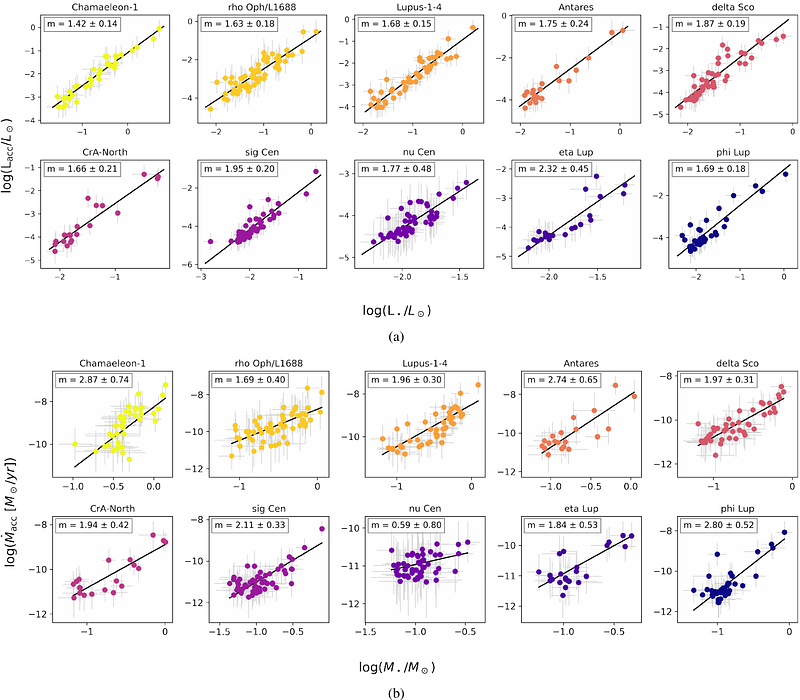Star formation and accretion rates within 500 pc as traced by Gaia DR3 XP spectra

Star formation and accretion rates within 500 pc as traced by Gaia DR3 XP spectra
L. Delfini, M. Vioque, Á. Ribas, S. Hodgkin
AbstractAccretion rates from protoplanetary disks onto forming stars are a key ingredient in star formation and protoplanetary disk evolution. Extensive efforts surveying individual star forming regions with spectroscopy and narrow-band photometry have been performed to derive accretion rates on large populations of young stellar objects (YSOs). We use Gaia DR3 XP spectra to perform the first all-sky homogeneous analysis of YSO accretion within 500 pc. We characterise the H$\alpha$ line emission of YSOs by using the H$\alpha$ pseudo-equivalent widths and XP spectra from Gaia DR3. We derive accretion luminosities, mass accretion rates and stellar parameters for 145 975 candidate YSO H$\alpha$ emitters all-sky. We describe filtering strategies to select specific sub-samples of YSOs from this catalogue. We identify a large population of low-accreting YSO candidates untraced by previous surveys. The population of low accreting YSOs is mostly spatially dispersed, away from star forming regions or more clustered environments of star formation. Many YSOs appear disconnected from young populations, reminiscent of 'Peter Pan' YSOs. We find $L_{acc}\propto L_\star^{1.41\pm0.02}$ and $\dot M_{acc}\propto M_\star^{2.4\pm0.1}$ for the purest all-sky sample of YSO candidates. By fitting an exponential to the fraction of accreting stars in clusters of different ages in the Sco-Cen complex, we obtain an accretion timescale of 2.7$\pm$0.4 Myr. The percentage of accretors found by fitting a power-law is 70% at 2 Myr and 2.8% at 10 Myr. With this new catalogue of H$\alpha$ emitters we significantly increase the number of YSO candidates with accretion rate estimations in the local neighbourhood. This allows us to study accretion timescales and the spatial and physical properties of YSO accretion from a large, all-sky, and homogeneous sample for the first time. [abridged]